Your cart is currently empty!

HARI Official Brand Site

Long recognized as a serious disease in raptors, bumblefoot, otherwise known as pododermatitis, also occurs frequently in psittacines.
Long recognized as a serious disease in raptors, bumblefoot, otherwise known as pododermatitis, also occurs frequently in psittacines. It is common in heavy-bodied birds such as Amazons and Hyacinth macaws, but is also seen in budgerigars and cockatiels.
The severity of this foot condition can vary from a mild thinning and reddening of the plantar surface of the feet, to a severe chronic infection that may involve bone infection (osteomyelitis) and can lead to septicemia and even death due to secondary infections. Although most cases involve the plantar region of the foot, some cases may begin by affecting only one digit, or the lesion may be located on the underside of the hock region, especially in larger psittacines such as Amazons or macaws.
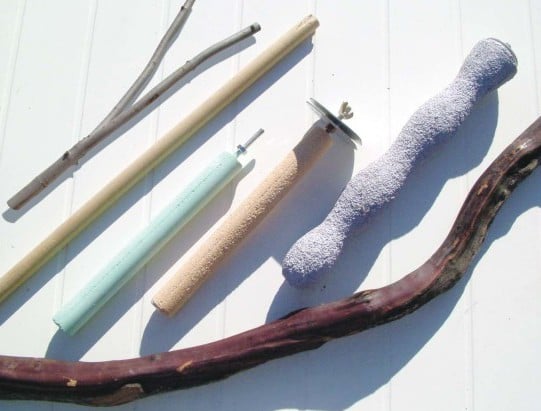
In raptors, the most common causes are punctures to the sole of the foot or digits by the bird’s own sharp talons, or bite wounds inflicted by its prey. In psittacines, the causes are most often nutritional or environmental. Nutritional causes include diets low in vitamin A, biotin, calcium, D3, or some other nutritional deficiency, or diets high in fat.
Spoiled food or feces caked to the perches can form a source of infection as bacteria multiply; standing on this source of concentrated contamination can result in infection of even a mild foot abrasion.
Harsh cleaning solutions that are not adequately rinsed can cause an initial irritation that can progress. Trauma to the foot from an injury that becomes secondarily infected can also be a cause. Commonly isolated bacteria include Staphylococcus sp., Streptococcus sp., Pseudomonas sp. and rarely, Candida sp. fungus or Mycobacteria sp. bacteria.
Other conditions may be confused with mild bumblefoot cases. These can include urate tophi of articular gout, small localized abscesses, poxvirus lesions, fungal lesions, parasites such as Knemidokoptes or filarial nematodes, insect bites, callus formation due to old fractures, frostbite, burns, trauma, or papillomas or other benign or malignant tumors. Other conditions include proliferations on the feet of canaries due to aging, constricted toe syndrome, constricting fibers wrapped around the toes or legs or too tight leg bands, or self-mutilation syndrome. Contact dermatitis can occur from ergot or contact irritants such as nicotine from contaminated hands of smokers, or hairspray or other chemicals.
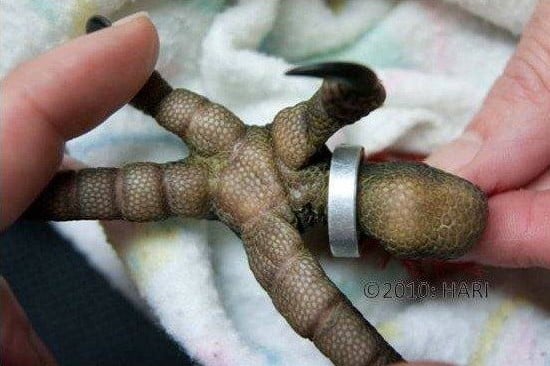
The severity of the lesions influences both the treatment and the prognosis, so a review of lesion grading is important. Raptor bumblefoot is usually graded from 1 to 5, but lesions in psittacines, which are often less pronounced when first presented than the lesions seen in raptors, are often graded from 1 to 7.
| BUMBLEFOOT LOOK FOR THESE SYMPTOMS | |
| Grade 1: | Thinning of the plantar surface of the foot with some reddening. |
| Grade 2: | The thinning of the plantar surface of the foot has progressed to the point where sub cutaneous tissue such as tendons can be seen through the skin. |
| Grade 3: | Ulcers form on the soles of the feet with calluses forming around the edges of the lesions. Some pain and mild lameness are present. |
| Grade 4: | A necrotic plug forms in the center of the ulcer, and pain and lameness are present. |
| Grade 5: | Cellulitis (swelling and edema) surrounds the area of necrosis, and the foot or digits can be swollen with edema (fluid). Tendons and metatarsal pads can become infected, and pain and severe lameness are present. |
| Grade 6: | The digits are swollen and the necrotic flexor tendons on the plantar surface of the foot rupture. Even with treatment, non-functioning digits and ankylosis (fusion of joints) will be present. |
| Grade 7: | Osteomyelitis (bone infection) occurs and can progress to systemic infection and even death. |
Most important in understanding the treatment of bumblefoot is to appreciate that even the mildest case should be treated promptly to avoid progression of the lesion, and that the more severe cases may require months of intense therapy in order to heal.
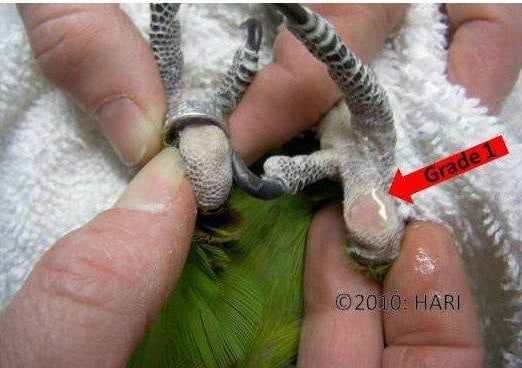
Grade 1 lesions can often be corrected by simple sound management practices. Proper nutrition should be considered first, not just by investigating the diet provided, but by ensuring that the bird is actually eating the full diet, and not just picking out its favorite foods. Make sure that the diet contains sufficient levels of vitamin A, biotin. calcium and vitamin D3, but be careful not to over-supplement. Make sure that the fat content of the diet is not too high; Amazons, Rose-breasted cockatoos, budgerigars and cockatiels are especially prone to obesity. Additional foods high in carotenoids such as orange or yellow coloured vegetables, and foods high in vitamin C and vitamin E may be beneficial. If in doubt, consult with your avian veterinarian regarding the best diet for your bird. Environmental causes should be investigated next. Are the diameters of the perches the correct size for the species? Too wide a perch diameter stretches the foot out too much; too narrow puts too much pressure on the wrong part of the foot.
Improper perch sizes are to your bird equivalent of wearing the wrong shoes.
Variety in perch diameter is essential, and can be provided by using natural branches from non-toxic insecticide-free trees. Sandpaper perches are like walking barefoot on a rough gravel road. The new abrasive perches intended to keep the bird’s nails short should never be positioned so that they are the perch on which the bird spends the majority of its time. Instead, they should only be located where the bird will use them occasionally, such as where the treat dish is located. As already stated, cleanliness is important, as spoiled food or feces caked to the perches can form a source for infection as bacteria multiply, and standing on this concentrated contamination can result in infection of even a mild foot abrasion. Be sure that any disinfectant used is rinsed off well so that it does not serve as a contact irritant. Beware of other contact irritants that the bird may encounter in its environment, such as nicotine-contaminated fingers, hairspray, or other chemicals.
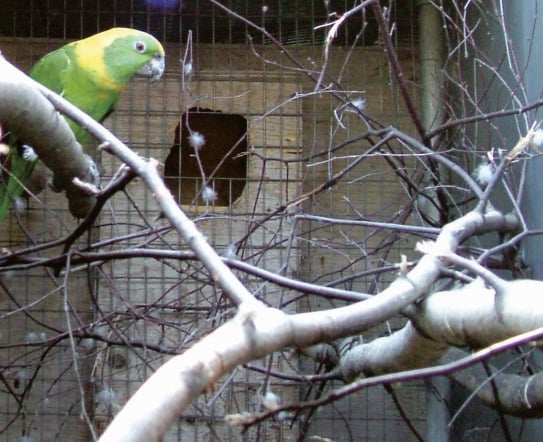
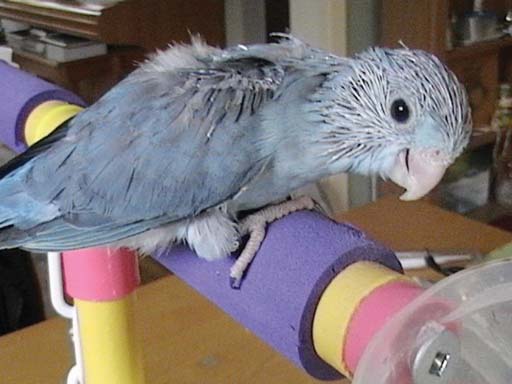
If making these changes does not decrease the reddening of the foot within one week, the perches should be padded. For small birds such as canaries, budgerigars and cockatiels, padding the perches with strips of moleskin tape (Johnson & Johnson) works very well. Be sure to replace the tape every two weeks or sooner as it becomes worn or soiled. Larger perches can be padded with toweling, flannel, or Vetrap (3M). Watch the bird carefully to make sure it is not ingesting the fibers or that loose fibers entangle its toes.
Grade 2 lesions should be treated the same as Grade 1 lesions, except that padding the perches should be done immediately to prevent further irritation of the feet until the other steps instituted can take effect. Gentle cleaning of the feet with the surgical scrub chlorhexidine (Nolvasan solution, Fort Dodge Laboratories) and massaging in a moisturizing lotion such as a non-scented lanolin-based lotion or bovine udder balm should be done every three days. Any lesions of Grade 3 severity or worse requires veterinary intervention, but their respective treatments will be described here to allow a better understanding of the steps involved in treating this serious condition.
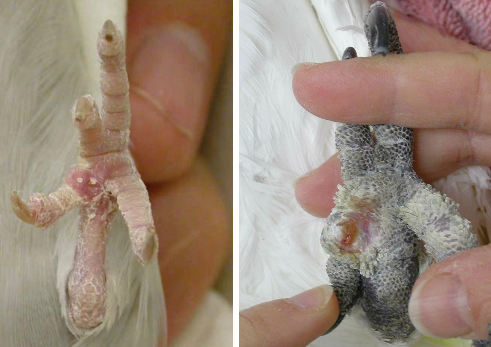
Grade 3 lesions may be cultured for bacteria if sufficient infected material is present to provide a useful sample. The lesion is cleaned with surgical scrub and a solution often consisting of DMSO, dexamethasone, and antibiotic may be applied. A bandage is applied for one to two weeks to prevent progression, and the bandage is checked or changed every three to five days. All nutritional and environmental changes as previously described are addressed.
All Grade 4 lesions are treated by removing the necrotic plug at the center of the lesion and collecting a sample for culture and sensitivity to help choose the right antibiotic. General anesthetic may be required if the bird is in severe pain or is extremely agitated by the treatment. The wound is thoroughly irrigated and disinfected, and a solution often consisting of DMSO, dexamethasone, and antibiotic may be applied. Excessive bleeding is a concern, and is avoided if at all possible. A hydroactive wound dressing is applied to draw out the infection and promote the best possible secondary intention healing, and the foot is bandaged. The bandage should be changed every three days to assess healing. Appropriate systemic antibiotic and pain management medications are administered.
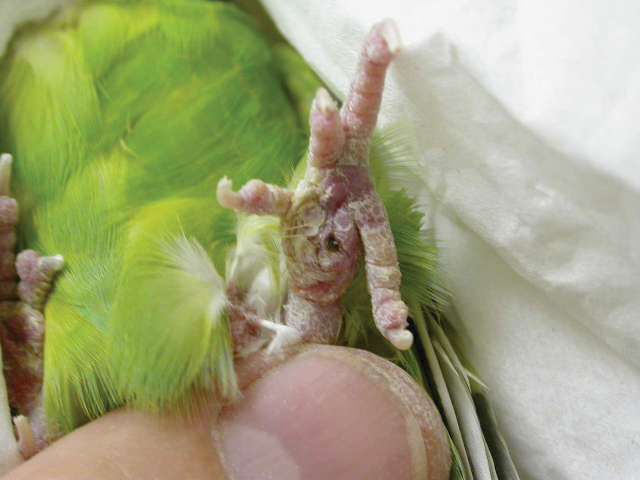
All lesions of Grade 5 severity or greater should be radiographed to assess whether bone infection is involved. If not, treatment is similar to Grade 4 lesions, however, injectable systemic antibiotics should be instituted and bandages should be changed every two days. Treatment is usually 6-8 weeks, and full recovery can take 4 to 6 months.
Initial treatment for Grade 6 lesions is the same as for Grade 5, although the bandages are changed daily. At 3 to 5 days, when the swelling has begun to subside, the foot is prepared for sterile surgery under general anaesthetic. A tourniquet is applied to control the hemorrhage, and the abscess wall is removed as well as any devitalized tendons and ligaments. Post operatively the bandages are changed daily until there is no more drainage, at which point every second or third day bandage changes commence. The appearance of healthy granulation tissue around the edges of the wound may take two to five weeks to appear. Even when the foot wound finally closes, the foot will still be extremely tender for several weeks, and may take months of careful monitoring with soft footing to prevent recurrence. Full recovery can take 6 months, but non-functioning digits and ankylosis (fusing of the joints) will be present.
Grade 7 lesions carry a grave prognosis. If a single digit is affected, consider amputation. If the whole foot is affected, treatment may be attempted, but amputation may be considered if only one foot is affected and does not begin to show signs of healing within a month. If treatment is possible, full recovery can take greater than 6 months, and non-functioning digits and ankylosis will be present. Complementary holistic approaches may also be useful. Although they should not be used as a substitute for proper medical therapy, when used in conjunction with the treatments described above they may help speed the healing process as they support the bird’s own immune system. Chinese liquid extract Astragalus administered at 1-2 drops in the drinking water per 30 gram body weight, and the chinese herb Angelica have been suggested as immune system boosters, as has aloe vera juice, administered at a rate of 2 drops per 100 g body weight. Homeopathic remedies Ledum 6C or Silicea 6C are useful in my experience, and others have suggested that the stimulation of acupuncture points ST36 and 40, SP6 and 9, Li11, Ki1, and bafeng may be useful. Consult with a holistic veterinary practitioner regarding more information on this subject.
Although bumblefoot is a serious condition, prompt intervention and thorough treatment can often resolve the condition.
By: Dr. Petra M. Burgmann
Dr. Petra Burgmann, BSc, DVM, Dip. ABVP (Avian Practice) Animal Hospital of High Park, 3194 Dundas St West, Toronto, Ontario, M6P 2A3
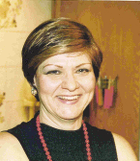
Dr. Burgmann received her Bachelor of Science (1980) and Doctor of Veterinary Medicine (1984) degrees from the University of Guelph, and has been practicing exotic pet medicine ever since. She opened her own exotics practice, the Animal Hospital of High Park, in 1986. In 1993 she was the first Canadian to be Board certified by the American Board of Veterinary Practitioners in Avian Practice, and she recertified for an additional 11 years in this specialty in 2002.
Dr. Burgmann is the author of “Feeding Your Pet Bird” as well as a contributing author, in avian and exotic pet medicine, to numerous other texts, journals and publications. She has lectured in exotic pet medicine at the University of Guelph, Seneca College, Toronto Academy of Veterinary Medicine, Ontario Association of Veterinary Technicians, Pet Industry Joint Advisory Council, Canadian Parrot Symposium, and many other special interest groups. She has also appeared on Cable 10 Community Broadcasting, CFRB, CBC radio, and CBC television.

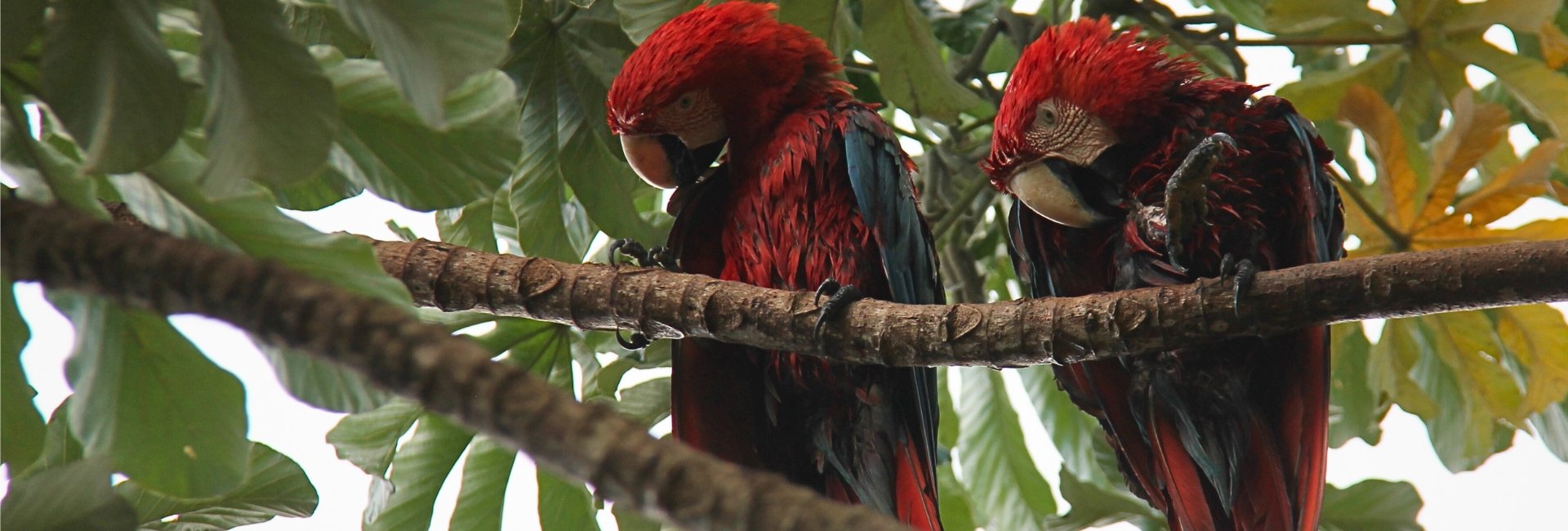
The classic and highly sought-after out-of-print volumes of Parrot Life Magazine